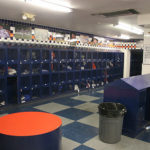If there was one thing Peter loved, besides books, it was the game of golf. And, now that the nation has been launched into the last two (most exciting!) days of Masters coverage, we thought we’d offer up a few morsels of little-known Augusta trivia. We want you to be the smartest fan in the vicinity of whatever electronic device you’re using to stream the action.
Every year, Masters week is the time we get bitten by the golf bug again–after the winter’s over and the frost has thawed from the greens, just early enough to make sure our game is in good less-rusty shape for summer. So, while we weren’t rewatching the Golf Boys or daydreaming about our very own Hover-mobile this past week, we did brush up a bit on our Masters trivia. Allow us to share a little of what we’ve learned:
- The most popular sandwich there still goes for the cool price of $1.50. Ok, you probably knew that. But did you know that the famed pimento is made with both American and Swiss cheese? To be specific: “Pasteurized processed American Swiss cheese consisting of: American cheese, Swiss cheese (milk, salt, cheese culture, enzymes), water, cream, sodium citrate, salt, sodium phosphate, sorbic acid (as a preservative), lactic acid, pimento.” Mmm, lactic acid…
- Green jackets are not the only prize handed out at the tournament. The low scorer of the day goes home with a crystal vase. A hole-in-one is rewarded with a large crystal bowl. An eagle earns you two crystal goblets. And a rare albatross will get you… wait for it… yes, another large crystal bowl. From 1955 through 1992, the winner received a silver box (originally a cigarette case) engraved with the names of all the year’s competitors. Doesn’t all of this sound like the components for the best wedding registry of all time?
- In 1934, a full week’s ticket to the Masters cost $5.50. Ticket sales for the week of the tournament–the first one in history–added up to $8,011.
- It’s not as flat as it looks. Because television tends to flatten out topography, nearly all first-time visitors to Augusta National are amazed by how hilly the course is. The 18th hole plays straight uphill; the 10th hole can comfortably play as a 500-yard par four because it runs so steeply down the same hill.
- Even the bunkers are super-swank. Another feature unique to Augusta National is the nature of the sand in the bunkers. The “sand” consists of quartz from the Spruce Pine Mining District in northwestern North Carolina (it’s a very pure by-product that occurs when feldspar is mined for aluminum). The bunkers are so powdery that a ball rolling through can leave the impression of its dimples in its wake. Quartz like the kind found in Augusta’s bunkers is now a hot commodity, as it is also used to make silicon chips.

All of the facts in this post have been compiled from the delightful cacophony of wisdom, folly, rules, truths, and trivia that is A Disorderly Compendium of Golf, an obsessive little gem of a book for addicts of the game (like me).
—Liz, who loves golf, too, almost as much as she loves books





No Comments